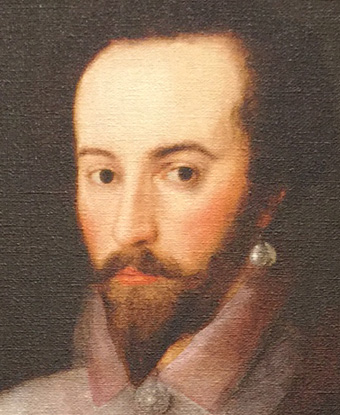Last updated: December 15, 2016
Person
Sir Walter Raleigh

Sir Walter Raleigh, explorer, soldier, seaman, writer, and favorite subject of Queen Elizabeth I was, as its sponsor, primarily responsible for the attempted colonization of Roanoke Island in the 1580s. Although Raleigh himself never set sail for the colony, his strong desire to establish an English colony in the New World made him a major player in England’s goal of eclipsing the Spanish as a global superpower.
Raleigh believed that a combination of plantations and privateering along the east coast of North America was crucial in establishing an English foothold in these new lands, lands that had already seen the arrival of Spain’s mighty fleets from Florida stretching to South America. If the English could establish functioning colonies just north of Spanish Florida, Raleigh believed that English privateers could harass Spanish shipping enough to obtain the supposed riches that both superpowers were seeking.
Raleigh’s plan, on paper, seemed masterful. In 1584, the first reconnaissance to the New World set sail. However, it became clear that many investors in the new English colony were unsure exactly what purpose the colony held. How much direct support from England would it need? Was privateering a logical way to secure a foothold in North America? Did the treasure that both England and Spain sought in the New World really exist? Should the colony truly be a colony or simply a military outpost? All these questions Raleigh never seemed to fully answer.
By 1587, when John White, Governor of Roanoke Colony, returned to England to ask Raleigh for more supplies and colonists to bolster the already failing venture of 118 men, women, and children, Raleigh was happy to oblige. However, Raleigh’s lack of foresight may have doomed the colony by this point. Spain’s New World colonies had provided them with a plethora of wealth, wealth that Philip II of Spain was unwilling to part with at the hands of Raleigh’s privateers. Rather than continue to fight Raleigh’s privateers piecemeal off the coast of North America, Philip launched a full-scale naval assault on England itself. Raleigh, being so close to Elizabeth I, was forced to abandon White’s request to resupply Roanoke. Instead Raleigh assisted with the repulsion of the Spanish Armada that was at England’s front door.
Although the English fleet of smaller, faster ships was able to defeat the Spanish Armada, thus cementing England as ruler of the seas, the delay prevented any return to Roanoke until 1590. Once John White was able to return to Roanoke, the colony had vanished. After 1590, Raleigh never again seemed to take as much interest in Roanoke. Perhaps he had realized that his initial belief in privateering and plantations had not been a successful combination? Or perhaps his dreams for English dominance lay elsewhere?
In 1592, Raleigh married Elizabeth Throckmorton, much to the disdain of Queen Elizabeth. Having fallen out of favor with the Court, Raleigh spent the remainder of his life primarily as a prisoner in the Tower of London or in various forms of exile. In 1618, Raleigh was executed for allegedly plotting to overthrow Queen Elizabeth’s successor, James I.
